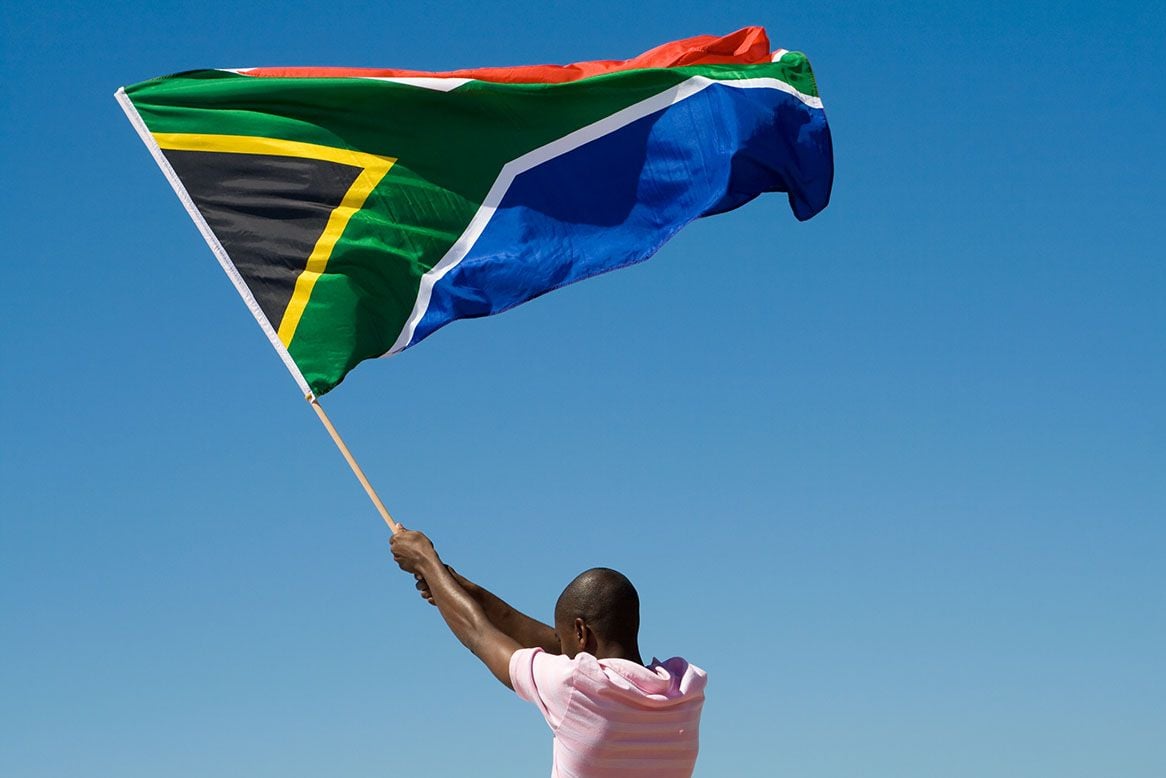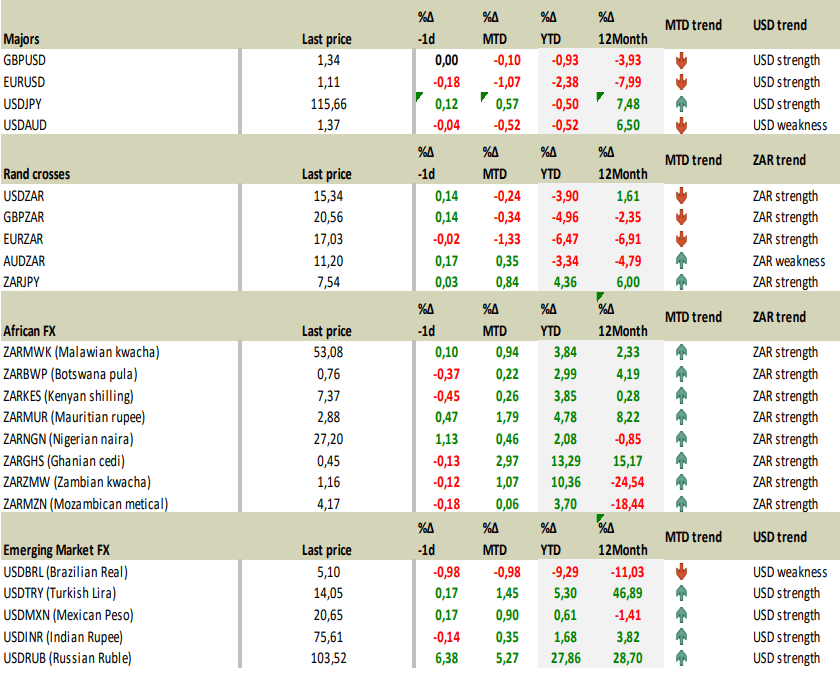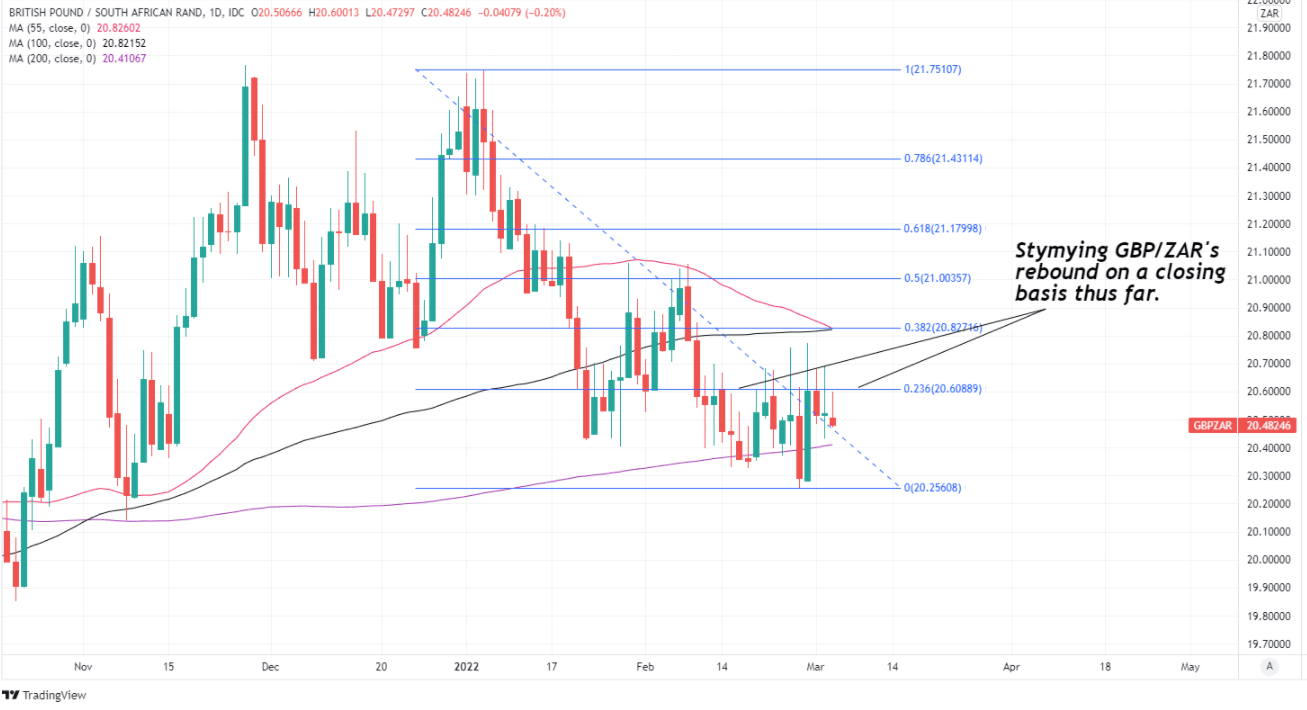South African Rand Eyes 15.15-15.60 Range after Conflict Disrupts Recovery
- Written by: James Skinner
-
- Risk aversion and runaway oil prices posing risk to ZAR
- USD/ZAR downtrend disrupted amid conflict in Ukraine
- Risk aversion and runaway oil prices posing risk to ZAR
- USD/ZAR seen trading in 15.15-15.60 range short-term

Image © Adobe Images
The South African Rand’s multi-month recovery has been disrupted by side effects of the conflict in Ukraine, which has called a halt to downtrends in exchange rates like GBP/ZAR and USD/ZAR, and could see the latter trading a 15.15 to 15.60 range in the short-term.
South Africa’s Rand had been rising strongly against the U.S. Dollar, Pound and other major currencies during the three months to the end of February but the downtrends in USD/ZAR and GBP/ZAR were stalled during the week to Thursday by an unprovoked Russian invasion of Ukraine.
The resulting shock to global financial markets has led to occasional bouts of significant volatility in exchange rates although so far the Rand has fared better than many of its detractors might have expected.
The Rand had posted tepid gains over the Dollar, Sterling and Euro in overall terms while sustaining losses against only the other commodity-sensitive currencies that would be less adversely exposed to the side effects of the conflict; side effects like runaway oil and gas prices.
“Oil’s sizzling rally pushed prices towards USD114 a barrel as buyers continued to shun Russian crude after its invasion of Ukraine, while OPEC+ is doing its best to ignore the war started by one of its key members,” says Walter de Wet, a fixed income and currency strategist at Nedbank.
Above: USD/ZAR shown at daily intervals alongside GBP/ZAR.
- GBP/ZAR reference rates at publication:
Spot: 20.50 - High street bank rates (indicative): 19.75-19.92
- Payment specialist rates (indicative): 20.28-20.39
- Find out about specialist rates, here
- Set up an exchange rate alert, here
“Initially, the rand traded to a high of 15,5600, before recovering to end the session trading in the low 15,40s. In the New York session, the rand encountered renewed support, which saw it trade firmer to reach 15,3000; this morning, it currently trades at 15,3250,” de Wet also said.
Nedbank’s de Wet and colleagues said on Thursday the USD/ZAR exchange rate could be likely to trade in a 15.15 to 15.60 range over the short-term which, based the recent ranges in GBP/USD, would imply a range of 20.39 to 20.74 for the Pound to Rand exchange rate.
“While the inflation outlook would have improved in the near term on the respite in this year’s budget from usual fuel tax increases, escalating international oil prices have largely scuppered this effect,” says Annabel Bishop, chief economist at Investec.
Source: Nedbank.
Secure a retail exchange rate that is between 3-5% stronger than offered by leading banks, learn more.
“The Reserve Bank will likely be on the look-out for second round inflationary pressures deriving from high commodity prices, particularly very elevated fuel prices, causing the SARB to remain hawkish. SA’s CPI inflation is likely to average over 5.0% y/y this year,” Bishop also said.
The oil price has increased significantly since the Russian military embarked upon its attempted conquest of Ukraine, taking Brent crude oil back to $115 per barrel in price action that amounts to a 48% increase barely more than two months into the fledgling year of 2022.
Natural gas prices have risen even more significantly and each of these developments will mean higher levels of inflation across the globe, and more currency being sold on international markets by net-importing countries like South Africa and the UK.
“Rand weakness would also add to the pressure for higher fuel prices in April, reaching R15.56/USD today,” Investec’s Bishop says.
Above: Pound to Rand exchange rate at daily intervals with Fibonacci retracements of 2022 downtrend indicating likely areas of technical resistance.
While the risk-aversion whipped up by the conflict and headwinds stemming from commodity price increases are significant challenges for many currencies, there have been signs that something of merciful offset could be coming through the pipeline for the months ahead.
“The near-term effects on the U.S. economy of the invasion of Ukraine, the ongoing war, the sanctions, and of events to come, remain highly uncertain. Making appropriate monetary policy in this environment requires a recognition that the economy evolves in unexpected ways. We will need to be nimble in responding to incoming data and the evolving outlook,” says Federal Reserve (Fed) Chairman Jerome Powell in opening testimony to Congress.
Fed Chairman Jerome Powell told U.S. lawmakers on Wednesday that the attack on Ukraine is a game-changer that could haunt the U.S. and global economies for some time to come, and indicated that this likely necessitates a more moderate pace of monetary policy normalisation in the U.S.
Rising inflation had until just last week led financial markets to anticipate as many as seven interest interest rate rises from the Fed this year, which had lifted bond yields across the world and strengthened the U.S. Dollar against many currencies.
While any slower pace of rate rises would be unlikely to undermine the recent strength of the Dollar, it could potentially restrain the pace of increase in borrowing costs across the U.S. and global economies, which would offer to some extent an indirect relief for many economies and currencies.






